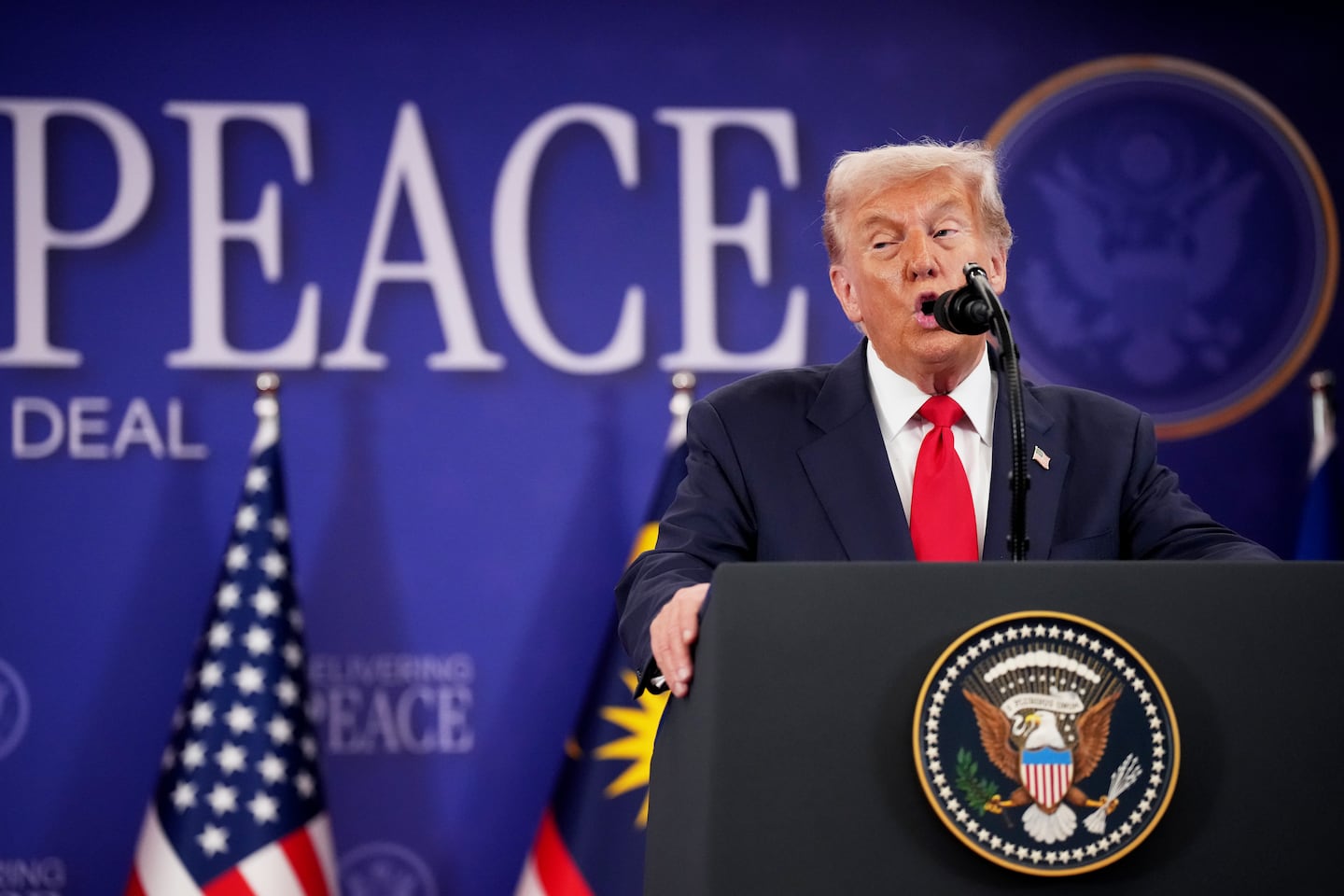Yet tools to ease the affordability crisis are limited. Steps the Trump administration has taken will need time to make an impact — if they work at all. Trump himself seems reluctant to acknowledge that a problem even exists.
Why it matters: Voters blamed Joe Biden for the country’s worst inflation in 50 years. It was a big reason Trump won the White House in 2024. Now he and the GOP are under pressure as attention turns to next November’s midterm elections.
Consumer sentiment is sinking and polls show declining confidence in Trump’s ability to manage the economy. Democrats scored high-profile wins in recent state and local elections with campaigns centered on affordability.
The drop in consumers’ purchasing power is “something that we’re going to fix, and we’re going to fix it right away,” Kevin Hassett, the director of the National Economic Council, told reporters Thursday.
Recap: Since Republicans’ poor showing at the polls, Trump has proposed sending out $2,000 tariff rebate checks and creating 50-year mortgages that would reduce monthly payments for homebuyers.
On Friday, he canceled tariffs on coffee, bananas, beef, and other items, conceding that some of his levies may have contributed to higher prices.
Still, the president continues to describe inflation as a thing of the past.
At a dinner with Asian leaders days after the election, he said, “Our energy costs are way down. Our groceries are way down. Everything is way down and the press doesn’t report it.” In a recent interview with Fox News host Laura Ingraham, he blamed lingering frustration with prices on “a con job by the Democrats.”
Status report: Inflation had cooled sharply from its 2022 peak by the time Trump returned to office.
Price growth slowed further early in his second term but has since ticked up as new tariffs work their way through the economy. From February through September, the Consumer Price Index rose at an annualized rate of 3.4 percent, compared with 2.9 percent for all of 2024.
Bad vibes: Even as the economy grows at a healthy clip, Trump is confronting a downbeat consumer sentiment similar to one Biden faced in 2023-2024.
Many Americans remain skeptical and feel little relief in their daily lives.
Prices are rising, albeit at a slower pace, on top of a roughly 25 percent jump since early 2020, while wages haven’t kept up.
Gasoline is cheaper under Trump, but electricity and natural gas bills are climbing. Some groceries cost less, but overall food prices — along with medical and child care costs — are still growing faster than inflation. Homeownership remains out of reach for many.
The economy’s K-shaped pattern — with wealthier households buoyed by rising stock prices while lower- and middle-income families struggle with higher prices and tighter budgets — has deepened dissatisfaction.
Tool box: Presidents, meanwhile, have limited power to combat inflation.
The main anti-inflation tool — interest rates — sits with the Federal Reserve. Housing costs, wages, and energy markets move largely beyond presidential control.
Trump has used levers available to him: tax cuts, deregulation, efforts to boost domestic energy production, and pressure on companies to invest and drug makers to lower prices. But the centerpiece of his economic agenda — tariffs — is increasingly working against his goal of easing living costs.
Tariffs raise prices for consumers and for businesses. Many companies initially absorbed the added costs by drawing down existing inventories, but economists expect price increases to accelerate next year as firms rebuild stockpiles and pass along higher costs to protect profit margins.
Final thought: I’m not sure how much Trump cares about reducing living costs for low- and middle-income Americans.
Tariff rebate checks sound appealing but make little economic sense, returning money that consumers effectively paid upfront through higher prices while leaving the underlying cost pressures intact.
Fifty-year mortgages would lower monthly housing payments but increase total borrowing costs and slow the buildup of equity. Policies that expand the housing supply remain the most effective way to make homes more affordable.
Most of all, would a president truly concerned about overburdened consumers fight to cut off food assistance during the government shutdown and block extension of tax credits for health care premiums while hosting a “Great Gatsby”-themed Halloween gala?
I suppose the F. Scott Fitzgerald novel’s Tom and Daisy Buchanan — who “smashed up things and creatures and then retreated back into their money or their vast carelessness” — would not have a problem with that.
Larry Edelman can be reached at larry.edelman@globe.com.
